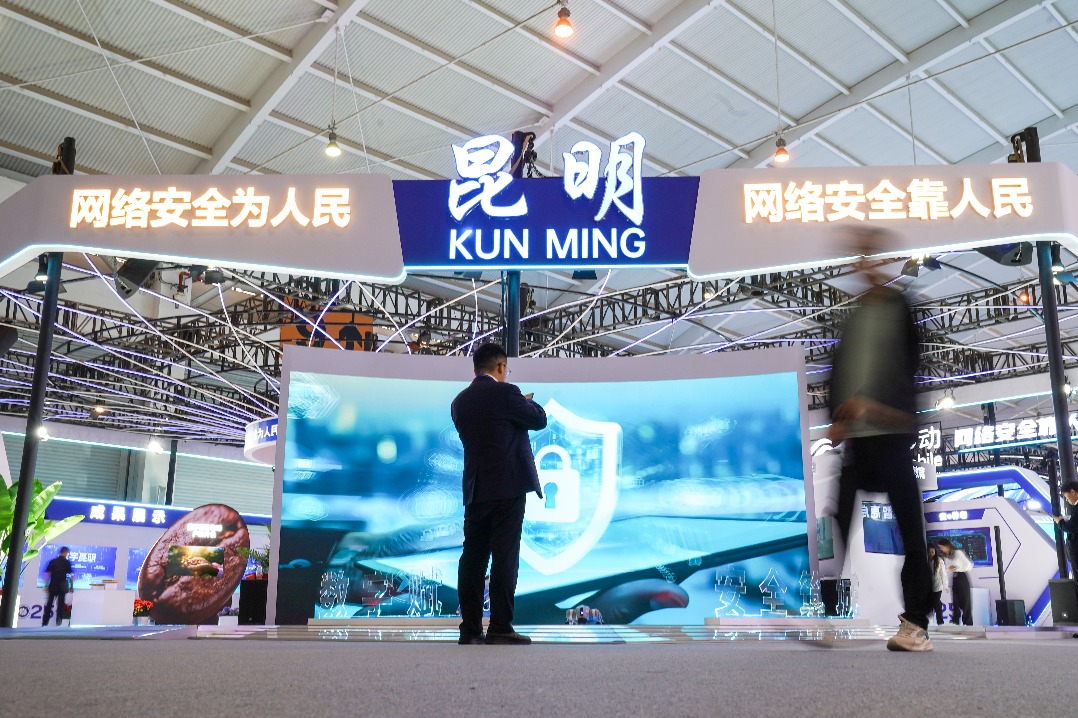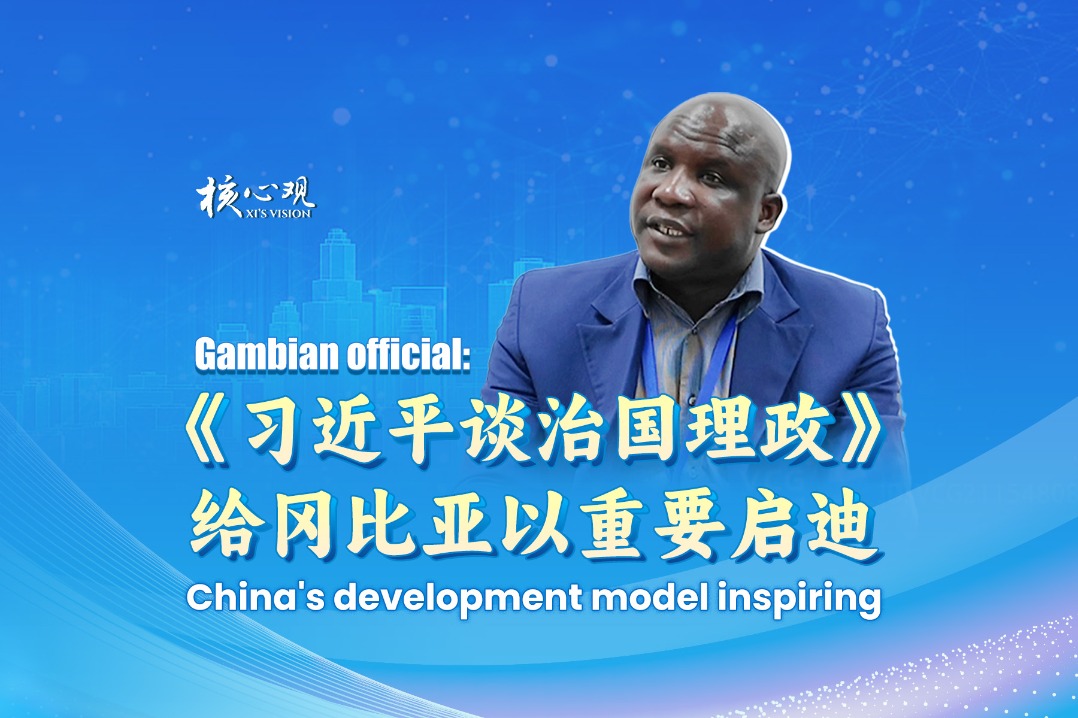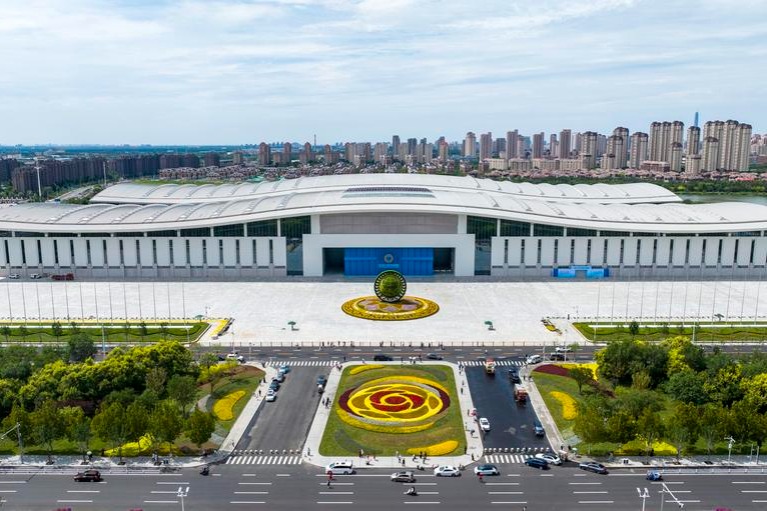Shared vision, shared future
ASEAN and China should continue to work together to build a cooperative framework based on mutual respect oriented toward development


Situated at the epicenter of East Asian geopolitics, the Association of Southeast Asian Nations has developed extensive and deep cooperative partnerships with the United States and its allies across political, military, economic and cultural domains over the decades. Meanwhile, China has emerged as ASEAN's most significant trade and economic partner and a key participant in regional infrastructure development. Walking a tightrope between China and the US has allowed ASEAN to reap substantial geopolitical dividends while hedging against strategic risks - a delicate yet advantageous balancing approach.
However, the protectionist measures adopted by the US with Donald Trump's return to power - particularly the weaponization of tariffs under the pretext of negotiations - expose a US foreign policy colored more by partisan politics and so-called national interest than any true concern for its partners' growth or regional economic integration. This has heightened anxieties within ASEAN over external dependencies, manifesting in competitions among each member state's strategy of negotiation and cooperation with the US, which betrays ASEAN's founding principle of "speaking with one voice" and clearly belies a deeper structural problem that demands deliberate consideration and careful recalibration.
For its part, China has consistently acknowledged and respected ASEAN's central role in the region, and continues to support its efforts to play a more independent and substantive part in promoting regional stability and building a more open and inclusive regional economic framework. China and the ASEAN member states share common interests in maintaining regional order and stability in China's periphery, serving as crucial pillars in addressing regional challenges.
ASEAN's goal of building an open and inclusive regional multilateral framework is consistent with China's commitment to further deepening reform and expanding high-standard opening-up. This commitment is evident in a series of landmark agreements such as the Regional Comprehensive Economic Partnership and the anticipated signing of the Version 3.0 China-ASEAN Free Trade Area agreement this October. This year marks the fifth anniversary since the signing of RCEP with steadily expanding cooperation and trade volumes, while the CAFTA 3.0 will facilitate the integration of regional industrial and supply chains, promoting free trade and win-win cooperation.
In this context, the China-ASEAN comprehensive strategic partnership has become a model for ASEAN's external cooperation. This collaboration extends beyond infrastructure development, product innovation and talent cultivation to include government-level experience sharing and governance cooperation in digital and energy transitions. It also enhances digital and green capabilities for small- and medium-sized enterprises, assisting ASEAN's micro businesses and SMEs in expanding global markets. Platforms such as the annual China-ASEAN Expo, with its latest event taking place from Sept 17 to 21 in Nanning, the Guangxi Zhuang autonomous region, help integrate these enterprises into China's new "dual-circulation" paradigm, enabling them to better access China's vast consumer market and jointly foster a supersized market. Furthermore, cooperation frameworks and mechanisms are being strengthened through the upgraded CAFTA 3.0 and regional free trade agreements such as the RCEP, facilitating deeper integration into regional production networks driven by global supply chains.
In March 2024, I undertook a field study in Indonesia focused on the Jakarta-Bandung High-Speed Railway. During interviews with local residents along the corridor regarding the impact of the landmark project of the Belt and Road Initiative and Indonesia's national strategic project, the correspondents predominantly employed words such as "faster", "more convenient" and "more comfortable". The most impressive and highest occurring term to characterize the train was the onomatopoeic expression "whoosh" - a term that embodies not only admiration for its velocity but also reflects a broader aspiration among Indonesians for greater wellbeing.
Furthermore, throughout urban areas in Indonesia, Wuling and BYD automobiles can be frequently observed navigating thoroughfares, while the distinctive cheeky face logo of Mixue Ice Cream& Tea, a popular Chinese beverage franchise, was greeting locals and foreign tourists alike from shopping malls to alleyways. These phenomena represent more than mere outcomes of expanding business partnerships; they also reflect tangible benefits that such cooperation brings to local communities, including greater convenience and an improved quality of life. Moreover, they reflect growing mutual trust, respect and long-term bilateral collaboration.
Such progress is widely creditable to China's cooperative philosophy with ASEAN nations, which asserts that partnership should extend beyond simple trade to encompass technology transfer. In projects such as the China-Laos Railway, the Jakarta-Bandung High-Speed Railway and Malaysia's East Coast Rail Link, Chinese companies have increased local employment in host countries and provided hands-on mentoring to build operational skills among host-country workers. According to China State Railway Group, the share of Indonesian employees on the Jakarta-Bandung line has steadily risen over the past two years, occupying important technical positions such as high-speed train drivers and emergency duty personnel, while Chinese staffing is being steadily phased out - a trend set to continue.
This philosophy is likewise manifested in development cooperation involving emerging technologies. In recent years, China has launched the Global Artificial Intelligence Governance Initiative and the AI Capacity-Building Action Plan for Good and for All, aimed at bridging the digital and intelligent divides and ensuring that Global South countries equitably benefit from advances in AI. As ASEAN represents a priority in China's diplomacy with neighboring countries and a key region for implementing the Action Plan, provincial regions such as Guangxi have responded to regional needs by collaborating with countries including Laos and Malaysia with an eye to establish the China-ASEAN AI innovation cooperation center. Such efforts assist ASEAN nations in securing a leading position in the regional AI landscape while safeguarding their cultural traditions.
A sustainable growth model lies in a cooperative framework built on mutual respect and oriented toward development. This vision represents, at its core, a call for a new type of international relations - one that moves beyond zero-sum thinking, rejects the imposition of values, and fosters genuine partnership through extensive consultation, joint contribution and shared benefit. This is precisely the cooperative vision that China has consistently advocated and practiced.
The cooperative model rooted in peaceful coexistence, mutual respect and seeking common ground while shelving differences - principles embodied most notably in the Bandung Conference 70 years ago - is gaining renewed relevance now. This framework has been embraced by the majority of countries as a fundamental norm of international relations and a cornerstone of international law at the time, and it continues to serve as an exemplary paradigm for Global South solidarity in an even more tumultuous and interconnected world with relentless global challenges.
The author is the vice-dean of the China-ASEAN Research Institute at Guangxi University. The author contributed this article to China Watch, a think tank powered by China Daily.
The views do not necessarily reflect those of China Daily.
Contact the editor at editor@chinawatch.cn.


































